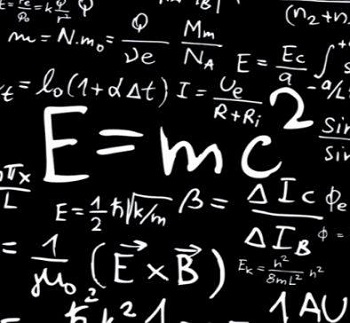 |
| Wernher von Braun |
In his twenties and early thirties, von Braun worked in Germany's rocket development program, where he helped design and develop the V-2 rocket at Peenemünde during World War II. Following the war, von Braun worked for the United States Army on an intermediate-range ballistic missile (IRBM) program before his group was assimilated into NASA. Under NASA, he served as director of the newly formed Marshall Space Flight Center and as the chief architect of the Saturn V launch vehicle, the superbooster that propelled the Apollo spacecraft to the Moon. According to a NASA source, he is, "without doubt, the greatest rocket scientist in history", as well as the "Father of Rocket Science".[citation needed][6] In 1975, he received the National Medal of Science. He continued insisting on the human mission to Mars throughout his life.
His life
Wernher von Braun was born on 23 March 1912 in the small town of Wirsitz, Posen Province, German Empire (now Wyrzysk, Poland). He was the second of three sons. He belonged to a noble family, inheriting the German title of Freiherr (equivalent to Baron). His father, conservative civil servant Magnus Freiherr von Braun (1878–1972), served as a Minister of Agriculture in the Reich Cabinet during the Weimar Republic. His mother, Emmy von Quistorp (1886–1959), could trace her ancestry through both parents to medieval European royalty and was a descendant of Philip III of France, Valdemar I of Denmark, Robert III of Scotland, and Edward III of England. Von Braun had an older brother, Sigismund, and a younger brother, also named Magnus. After Wernher von Braun's Lutheran confirmation, his mother gave him a telescope, and he developed a passion for astronomy. The family moved to Berlin in 1915 where his father worked at the Ministry of the Interior. Here 12-year-old Wernher von Braun, inspired by speed records established by Max Valier and Fritz von Opel in rocket-propelled cars, caused a major disruption in a crowded street by detonating a toy wagon to which he had attached a number of fireworks. He was taken into custody by the local police until his father came to collect him.
 |
| Wernher (center) with his two brothers. |
Wernher von Braun was an accomplished amateur pianist who could play Beethoven and Bach from memory. He learned to play both the cello and the piano at an early age and at one time wanted to become a composer. He took lessons from the composer Paul Hindemith. The few pieces of von Braun’s youthful compositions that exist are reminiscent of Hindemith’s style.
Beginning in 1925, von Braun attended a boarding school at Ettersburg Castle near Weimar, where he did not do well in physics and mathematics. There he acquired a copy of By Rocket into Planetary Space (Die Rakete zu den Planetenräumen, 1923) by rocket pioneer Hermann Oberth. In 1928, his parents moved him to the Hermann-Lietz-Internat (also a residential school) on the East Frisian North Sea island of Spiekeroog. Space travel had always fascinated von Braun, and from then on he applied himself to physics and mathematics to pursue his interest in rocket engineering.
In 1930, he attended the Technische Hochschule Berlin, where he joined the Spaceflight Society (Verein für Raumschiffahrt or "VfR") and assisted Willy Ley in his liquid-fueled rocket motor tests in conjunction with Hermann Oberth. In spring 1932, he graduated from the Technische Hochschule Berlin (now Technical University of Berlin), with a diploma in mechanical engineering. His early exposure to rocketry convinced him that the exploration of space would require far more than applications of the current engineering technology. Wanting to learn more about physics, chemistry, and astronomy, von Braun entered the Friedrich-Wilhelm University of Berlin for post-graduate studies and graduated with a doctorate in physics in 1934. He also studied at ETH Zürich. Although he worked mainly on military rockets in his later years there, space travel remained his primary interest.
In 1930, von Braun attended a presentation given by Auguste Piccard. After the talk the young student approached the famous pioneer of high-altitude balloon flight, and stated to him: "You know, I plan on traveling to the Moon at some time." Piccard is said to have responded with encouraging words.
Working with the Nazis
First rank, from left to right, General Dr Walter Dornberger (partially hidden), General Friedrich Olbricht (with Knight's Cross), Major Heinz Brandt, and Wernher von Braun (in civil garment) at Peenemünde, in March 1941.
In 1933, Von Braun was working on his creative doctorate when the National Socialist German Workers Party (NSDAP, or Nazi Party) came to power in a coalition government in Germany; rocketry almost immediately moved onto the national agenda. An artillery captain, Walter Dornberger, arranged an Ordnance Department research grant for von Braun, who then worked next to Dornberger's existing solid-fuel rocket test site at Kummersdorf. He was awarded a doctorate in physics (aerospace engineering) on July 27, 1934, from the University of Berlin for a thesis entitled "About Combustion Tests"; his doctoral supervisor was Erich Schumann. However, this thesis was only the public part of Von Braun's work. His actual full thesis, Construction, Theoretical, and Experimental Solution to the Problem of the Liquid Propellant Rocket (dated April 16, 1934) was kept classified by the army, and was not published until 1960. By the end of 1934, his group had successfully launched two liquid fuel rockets that rose to heights of 2.2 and 3.5 km (2 mi).
 |
| Wernher von Braun with the NAZI party |
At the time, Germany was highly interested in American physicist Robert H. Goddard's research. Before 1939, German scientists occasionally contacted Goddard directly with technical questions. Wernher von Braun used Goddard's plans from various journals and incorporated them into the building of the Aggregat (A) series of rockets. The A-4 rocket would become well known as the V-2. In 1963, von Braun reflected on the history of rocketry, and said of Goddard's work: "His rockets ... may have been rather crude by present-day standards, but they blazed the trail and incorporated many features used in our most modern rockets and space vehicles."
Surrender to the Americans
The Soviet Army was about 160 km (99 mi) from Peenemünde in the spring of 1945 when Von Braun assembled his planning staff and asked them to decide how and to whom they should surrender. Afraid of the well-known Soviet cruelty to prisoners of war, von Braun and his staff decided to try to surrender to the Americans. Kammler had ordered relocation of his team to central Germany; however, a conflicting order from an army chief ordered them to join the army and fight. Deciding that Kammler's order was their best bet to defect to the Americans, von Braun fabricated documents and transported 500 of his affiliates to the area around Mittelwerk, where they resumed their work. For fear of their documents being destroyed by the SS, von Braun ordered the blueprints to be hidden in an abandoned mine shaft in the Harz mountain range.
While on an official trip in March, von Braun suffered a complicated fracture of his left arm and shoulder in a car accident after his driver fell asleep at the wheel. His injuries were serious, but he insisted that his arm be set in a cast so he could leave the hospital. Due to this neglect of the injury he had to be hospitalized again a month later where his bones had to be re-broken and re-aligned.
In April, as the Allied forces advanced deeper into Germany, Kammler ordered the engineering team to be moved by train into the town of Oberammergau in the Bavarian Alps where they were closely guarded by the SS with orders to execute the team if they were about to fall into enemy hands. However, Von Braun managed to convince SS Major Kummer to order the dispersion of the group into nearby villages so that they would not be an easy target for U.S. bombers.
 |
| Wernher von Braun with americans |
 |
| President John F. Kennedy and Dr. Wernher von Braun |
Von Braun and a large number of the engineering team subsequently made it to Austria. On May 2, 1945, upon finding an American private from the U.S. 44th Infantry Division, Von Braun's brother and fellow rocket engineer, Magnus, approached the soldier on a bicycle, calling out in broken English: "My name is Magnus von Braun. My brother invented the V-2. We want to surrender."
The American high command was well aware of how important their catch was: von Braun had been at the top of the Black List, the code name for the list of German scientists and engineers targeted for immediate interrogation by U.S. military experts.
Source : Wikipedia
Share
WERNHER VON BRAUN
4
/
5
Oleh
Univers Science






